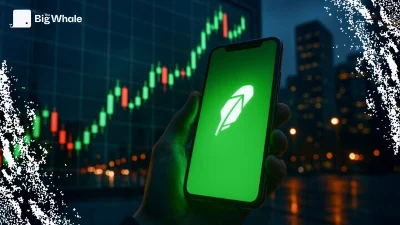BlackRock's arrival has shaken up the market. Since the announcement of the deployment on Ethereum of BUIDL, the American asset management giant's tokenised money fund, this sector has seen a meteoric rise.
In March, the market represented just over $500 million. Today, that figure has almost quadrupled, reaching nearly $2 billion.
"Admittedly, other traditional players have already launched similar products, but BlackRock brings unprecedented media visibility. Now, all the financial institutions are taking a serious interest in this market," explains Sébastien Dérivaux, co-founder of Steakhouse Financial, a consultancy for decentralised autonomous organisations (DAOs).
>> Read also: How DeFi is democratising access to finance (with Sébastien Dérivaux)
On November 1, UBS - the world's largest private bank, which notably absorbed Credit Suisse this summer - also launched its own tokenised money fund on Ethereum . Further proof of the growing craze for this market.
To date, BlackRock's BUIDL largely dominates with almost 28.72% market share ($530 million), followed by Hashnote's USYC ($395 million) and Ondo Finance's USDY ($218 million).
>> Read also: Fundamental analysis of the Ondo project
Source: Steakhouse Financial Source: Steakhouse Financial
Like stablecoins, money market funds have benefited from a high interest rate environment for their development. Composed almost exclusively of government bonds, they offer their investors returns of around 4.5% annualised at the end of 2024.
The adoption of traditional finance products by crypto players began with Tether and Circle , which included US government bonds in their reserves to the tune of several tens of billions of dollars. However, it was MakerDAO (now Sky), issuer of the DAI - the first decentralised stablecoin on the market - that really initiated this movement into decentralised finance (DeFi). From October 2022, MakerDAO began incorporating US Treasuries into its pool, allowing it to maintain attractive yields despite falling cryptocurrency prices.
Also read - Sky (ex-Maker): What's the value of this new DeFi protocol and its ecosystem?
Introduction to the "risk-free rate" in DeFi A money market fund is a type of investment that primarily places its capital in assets considered to be "risk-free", such as government bonds, cash deposits or low-risk corporate bonds.
These funds attract investors looking for a safe temporary investment, particularly in times of economic uncertainty. Their liquidity allows investors to withdraw their funds quickly at no extra cost.
The integration of money market funds in decentralised finance (DeFi) is crucial to strengthening the resilience of the system and making it more attractive to traditional financial institutions.
"Currently, the main collateral in DeFi is Bitcoin and Ether, which are highly volatile. Tokenised money market funds offer an excellent alternative," explains Sébastien Dérivaux. "Their integration will introduce products that are both liquid and more stable for investors."
In addition to offering safer collateral, these funds enable protocols to diversify their cash. Several major players have already incorporated BlackRock's BUIDL into their reserves.
Ethena, issuer of USDe - the second-largest decentralised stablecoin on the market ($2.7 billion) - is even planning to launch UStb, a stablecoin based entirely on BlackRock's BUIDL. Decentralised lending giant Aave, meanwhile, is considering a similar move.
>> Also read - Ethena (ENA) : Issuer analysis of stablecoin USDe
"Treasuries are just the beginning of tokenisation, which will spread to many other traditional assets in the coming years," predicts Kevin Chan, vice president of BlockTower, a US venture capital fund that has invested in Centrifuge and Maple Finance, two pioneering projects in the tokenisation of traditional assets.
Increased composability for traditional finance If players such as BlackRock are now publicly claiming that tokenisation of assets on blockchain represents the future of finance, it is because of the many advantages offered by this digital representation. Money market funds are a perfect illustration of this.
In their tokenised version, these funds pay daily dividends, and investors can transfer their tokens 24/7 throughout the year.
This composability opens up huge opportunities for traditional finance and paves the way for new fund management strategies.
On 18 October, Bloomberg reported that BlackRock was negotiating with exchange platforms such as Binance, OKX and Deribit to incorporate BUIDL as collateral in crypto derivatives contracts.
French start-up Spiko, which also offers two money market funds denominated in euros and dollars, is in talks with exchange platforms for similar use. "The majority of collateral listed by market makers is in USDT, Tether's stablecoin, which generates no return and has a higher counterparty risk than money market funds. Tokenised money market funds can therefore considerably improve collateral management," explains its CEO and co-founder Paul-Adrien Hyppolite.
Soon stablecoins issued by money market funds? Currently, global regulations, particularly in Europe, make a clear distinction between payment and savings instruments. Money market funds, classified in the second category, cannot be used for payments. Similarly, stablecoins are not allowed to redistribute the returns generated by their reserves to their holders.
However, some players, including US asset manager Franklin Templeton, publicly anticipate that the technical features of blockchain will one day make it possible to overcome these limitations.
"Issuers of stablecoins and tokenised money market funds are both seeking to merge savings and payments. Nevertheless, I believe that money market funds offer more guarantees in terms of risk," explains Paul-Adrien Hyppolite.
He continues: "Imagine buying a café with your money market fund balance. An automatic redemption of shares could take place at the time of payment." The entrepreneur makes no secret of his ambition to become a "new form of banking" in the future.
Although many regulatory hurdles remain, evolution could be rapid. In its Q4 2024 report, the US Treasury Department devotes around 20 pages to stablecoins and tokenised money market funds, highlighting their potential to "significantly improve the functioning of capital markets".






